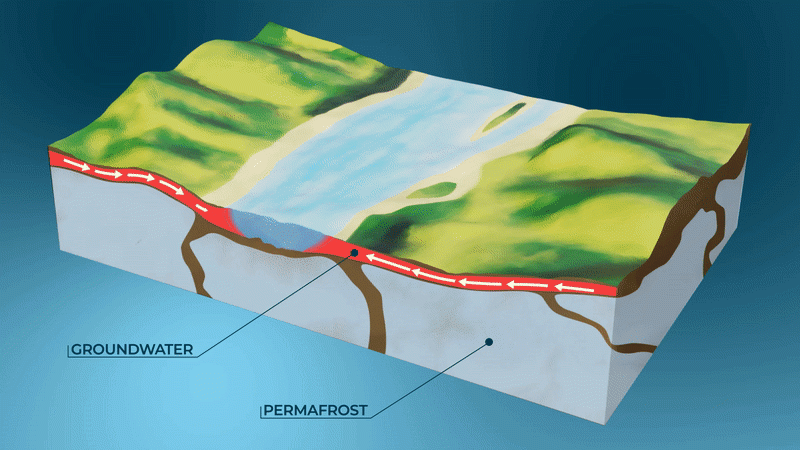
A study by Oak Ridge National Laboratory, the University of Copenhagen, the National Park Service and the U.S. Geological Survey showed that hotter summers and permafrost loss are causing colder water to flow into Arctic streams, which could impact sensitive fish and other wildlife.
To understand trends observed in 11 Alaskan streams, ORNL researchers modeled the flow of water through the semi-frozen landscape during summer months. Usually, permafrost forms an icy barrier that keeps groundwater flow to the topmost layer of soil, which allows the water to warm with summer air temperatures.
Researchers found that as thawing permafrost sinks lower beneath the surface, groundwater flows deeper underground and, therefore, stays colder.
“In this ecosystem, the lateral flow of water strongly influences stream levels and temperatures,” said ORNL’s Scott Painter, “but it is often neglected in models. Our Amanzi-ATS model provides a detailed representation of the physics that impact groundwater supplying Arctic streams.”




